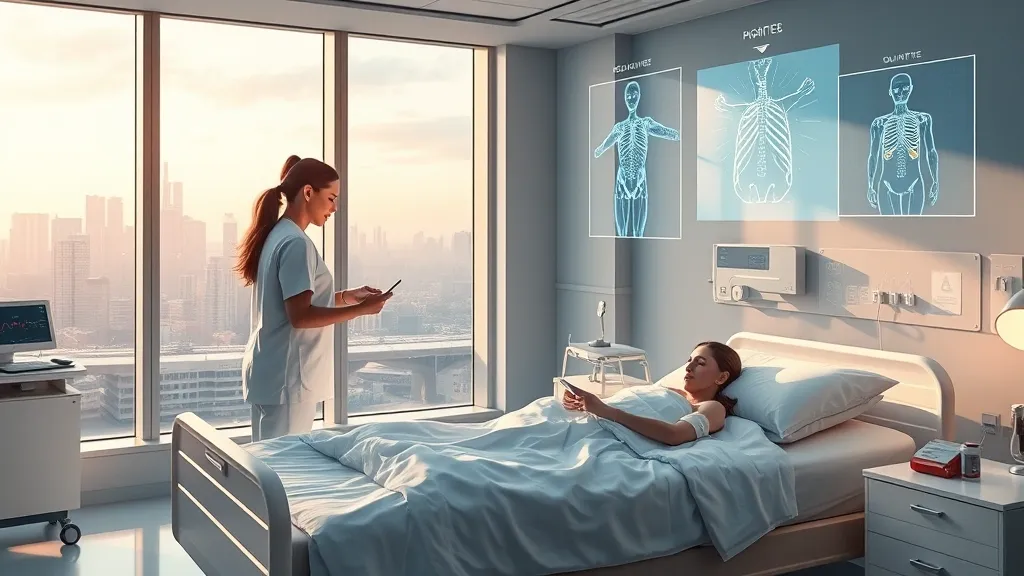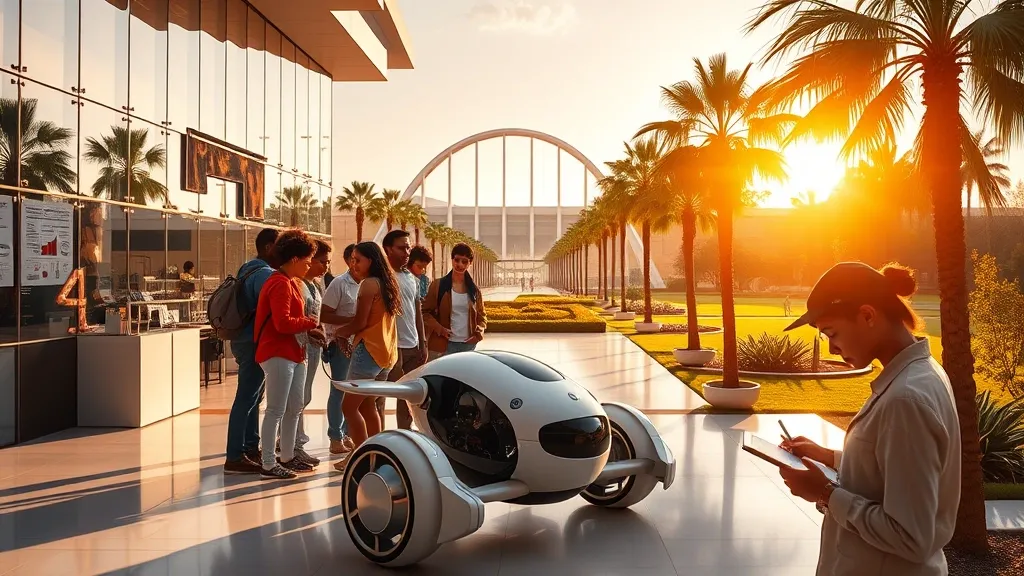Pulse of Progress: The Heartbeat of Innovation
You know, when we talk about healthcare, it’s easy to get lost in all the jargon and heavy science stuff. But at its core, it really boils down to this: we’re in the middle of a massive tech revolution that’s changing how we think about, deliver, and experience care. It’s kinda wild when you think about it, right? From wearables to telemedicine, innovation is like that friend who shows up uninvited but you’re actually glad they did.
Take a moment to think about those smartwatches that track your heart rate, sleep patterns, and even remind you to stand up. I mean, how cool is that? It’s like having a mini doctor on your wrist, telling you to move around instead of binge-watching Netflix all day (which, let’s be honest, is super tempting). These devices collect data that can help detect issues before they become serious. It’s like having a crystal ball, but instead of predicting the future, it’s just telling you to drink more water.
And then there’s telemedicine. Seriously, who would’ve thought that we’d be having video calls with our doctors? I remember when I used to have to sit in a waiting room, flipping through outdated magazines while hoping I wouldn’t catch the flu from someone sneezing nearby. Now, I can just grab my phone, look presentable (or not, no judgment here), and get my questions answered from the comfort of my couch. It’s a game changer. Plus, no traffic, no parking headaches, and definitely no awkward small talk with nurses.
Let’s not forget about AI and machine learning, which are like the brains behind the operation. They’re analyzing mountains of data faster than I can finish a slice of pizza (and trust me, I eat pretty fast). This tech can help in diagnosing conditions, predicting patient outcomes, and even suggesting treatments tailored to individual needs. That’s some next-level stuff!
- Wearables: Keeping tabs on our health 24/7.
- Telemedicine: Because who wants to drive to the doc when you can just log in?
- AI: The super-smart assistant every healthcare provider didn’t know they needed.
The bottom line is, we’re just scratching the surface of what’s possible. Medical technology is like a freight train of progress, and I’m pretty sure it’s only going to pick up speed. As we embrace these innovations, the future of healthcare looks brighter than ever. So, buckle up! We’re in for an exciting ride!
From Sci-Fi to Reality: Gadgets That Heal
You know how in those old sci-fi movies, they had these fancy gadgets that could heal wounds in a flash? Well, it’s kinda wild, but some of that stuff is becoming real life! I mean, who would’ve thought we’d be living in a time where tech actually helps us heal? Seriously, it’s like we’ve leaped straight outta those flicks and into a world where medical technology is making some crazy advancements.
Take wearables, for instance. Remember when a fitness tracker was just a flashy band that counted steps? Now, we’ve got devices that can monitor your heart rate, track your sleep patterns, and even check your blood oxygen levels. It’s like having a mini-doctor on your wrist! I sometimes wonder if my watch is judging me when I skip my workouts. But hey, at least it keeps me aware, right?
Then there are gadgets like smart inhalers and continuous glucose monitors. These nifty tools are game-changers for people with asthma or diabetes. Smart inhalers can track when you use them and remind you to take your meds. And those glucose monitors? They send data straight to your smartphone. No more finger pricks all day, every day! Just a little sensor under your skin and bam, you’re good to go. It’s almost like magic, but with a lot more engineering involved.
- 3D-Printed Prosthetics: And let’s not forget about 3D printing. Seriously, it’s not just for making cool toys or weird home decor. People are getting custom prosthetics that fit perfectly and look way cooler than the old-school metal ones. I mean, who wouldn’t want a prosthetic arm that looks like it’s from a superhero movie?
- Telemedicine: Oh, and telemedicine! It’s like having a doctor in your pocket. You can video call your doc without even changing outta your pajamas. I can’t tell you how nice that is when you’re feeling under the weather. Just grab your phone, and there you go—instant medical advice. No waiting rooms, no awkward small talk about the weather.
Honestly, it feels like we’re just scratching the surface of what’s possible. These gadgets are not just tech for tech’s sake; they’re genuinely changing lives. It’s exciting to think about what’s next. Maybe one day we’ll have a gadget that not only heals but makes you breakfast too. Now that’s the dream!
Data: The New Doctor in the Room
Okay, let’s get real for a second. Data is like that super-smart friend who always seems to know the answers, right? In healthcare, it’s become the new doctor in the room, and honestly, it’s kind of wild to think about. We’re talking about a world where numbers and analytics can help diagnose conditions, predict outcomes, and even personalize treatment plans. It’s like having a crystal ball, but way less mystical and way more scientific.
The explosion of electronic health records (EHRs) has made it possible to collect and analyze vast amounts of patient data. This isn’t just about crunching numbers for the sake of it. It’s about understanding trends, spotting potential health issues before they become serious, and tailoring care to fit individual needs. Imagine your doctor being able to say, “Based on your unique health data, here’s what works best for you.” Sounds pretty cool, right?
And let’s not forget about artificial intelligence (AI). I mean, AI is like the superhero of data analysis. It can sift through mountains of information way faster than any human could possibly dream of. AI algorithms can identify patterns in patient data that might be overlooked by even the most experienced clinicians. It’s as if we’re giving doctors a superpower, helping them make quicker and more informed decisions. And who wouldn’t want a superhero in their corner when it comes to health?
- Predictive Analytics: This is where things get really interesting. Using data to predict future health issues is like having a personal health coach who knows what’s coming up next. Hospitals are now using predictive analytics to foresee patient admissions and avoid potential crises. It’s all about being proactive instead of reactive.
- Personalized Medicine: Gone are the days of one-size-fits-all treatment plans. Data allows for tailored therapies that consider genetic makeup, lifestyle, and even preferences. It’s almost like customizing a pizza—everyone gets what they want!
- Enhanced Patient Engagement: With apps and online platforms, patients can now access their health information in real time. It’s like being in control of your own health journey. Plus, it’s a great excuse to scroll through your health stats like they’re Instagram posts.
So, while there’s still a ton of work to be done in the healthcare field, it’s clear that data isn’t just a sidekick—it’s becoming the main event. And as we continue to embrace this digital transformation, who knows what other surprises are in store for us? One thing’s for sure: the future of healthcare looks a whole lot smarter.
Empathy and Efficiency: The Human Touch in a Tech World
So, let’s chat about something that’s super important in healthcare: the balance between tech and the human touch. I mean, we’re living in a time where technology is basically our best buddy, right? From telemedicine to AI diagnostics, it’s all pretty mind-blowing. But here’s the kicker: as much as we love our gadgets and apps, we can’t forget about the good ol’ human element in care.
Picture this: you’re in a hospital, feeling a bit anxious about your procedure. Sure, a robot can give you all the facts and figures you need, but sometimes, you just want someone to hold your hand and tell you it’s gonna be okay. That’s where empathy comes in. It’s not just a buzzword; it’s a crucial part of healing. A warm smile or a comforting word can make a world of difference.
Now, don’t get me wrong. I’m all for efficiency. Who wouldn’t love to have their medical records accessible at the click of a button? But when a doctor is so focused on their screen that they forget to make eye contact, it can feel a bit cold, right? It’s like ordering a pizza and getting a cardboard box instead of a cheesy slice. No thanks!
In this tech-driven world, blending empathy with efficiency is key. Healthcare providers are starting to recognize that while AI can crunch numbers and analyze data faster than you can say “healthcare revolution,” it can’t replace the human connection. Patients want to feel heard, understood, and cared for—not like just another appointment on a busy schedule.
- Studies show that patients who feel cared for often have better health outcomes.
- Healthcare providers who engage with empathy tend to build trust and loyalty.
- Finding a balance between tech and the human touch is essential for a more holistic approach to care.
So, how do we make this work? It’s all about training. Healthcare professionals need to embrace tech, sure, but they also need to keep honing those emotional skills. Maybe it’s time for a little empathy training alongside coding bootcamps, huh? Imagine doctors being just as comfortable with a compassionate conversation as they are with interpreting a CT scan. That’s the future we should be aiming for!
In the end, it’s not just about the tools we use; it’s about how we use them. The future of healthcare should be a blend of cutting-edge technology and genuine human connection. That’s where we’ll find the magic.



